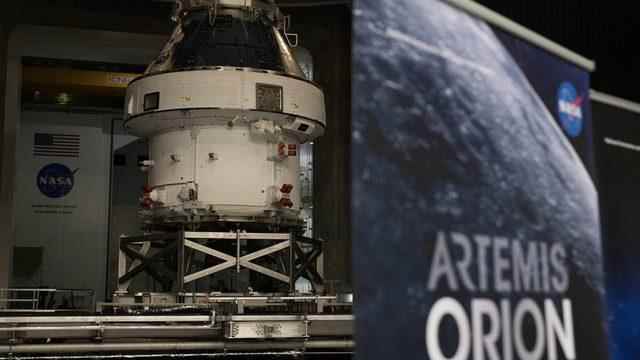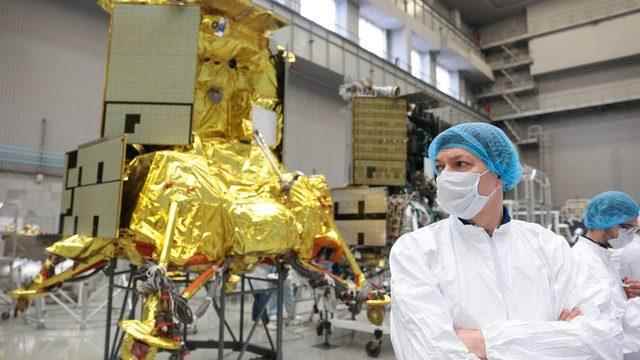Unlike 2021, where there is no movement in terms of landing on the moon, this year will be quite active.
The American Aeronautics and Space Administration (NASA) is sponsoring a number of other missions to launch the Artemis program and to deliver equipment and supplies to the Moon for future use by astronauts.
India, Japan, Russia, South Korea and the United Arab Emirates will also launch Moon missions this year. In addition to these countries, some private companies will also participate in the race to reach the Earth’s satellite this year.
All of these will be uncrewed spaceflights and will lay the groundwork for a sustainable human presence on the Moon’s surface, often in less than a decade.
But this is not the ultimate goal; The lunar station target is a step forward for crewed journeys to the red planet Mars.
University of Bristol astrophysicist Dr. Zoë Leinhardt sees this year as the start of a new space race involving new countries.

While most of these missions aim to explore the Moon itself, some have larger goals.
“Some missions have long-term goals that move one field forward, and trips to the Moon are both proof of concept and an opportunity to test new technology and collaborations,” says Dr Leinhardt.
So what is each task about and what are their goals? Here’s what’s waiting for the Moon this year:
NASA Artemis-1 mission and Capstone
NASA’s ambitious Artemis space program aims to return humans to the Moon by 2025.
In March, the Artemis-1 mission will begin laying the groundwork for this ambitious goal.
The mission will be uncrewed, except for a dummy that will sit in the command seat aboard Artemis 1. This is a lifelike mannequin named after Arturo Campos, who was a key player in bringing Apollo 13 back to Earth safely.
Campos’ role will be to test the spacesuit that Artemis astronauts will use during launch, entry and other dynamic phases of their missions.
NASA’s new Space Launch System (SLS) – the world’s most powerful rocket – will launch the mission and transport the Orion spacecraft around the Moon to test the safety of the crew vehicle.
NASA will take a close look at data on Orion’s heat shield as it re-enters Earth at a rate of around 2,760 degrees Celsius.
Also this year, another key element of the Artemis program will take a big step forward: Capstone (Cislunar Autonomous Positioning System Technology Operations and Navigation Experiment) will be a guiding mission for the Artemis program.
Again in March 2022, NASA will launch the microwave-sized CubeStat satellite as Capstone’s spacecraft to try a Moon-centered orbit that orbits the Moon as it orbits Earth.
The goal is to ensure the safety of astronauts on future journeys.

‘The ultimate destination is Mars’
The insights from this test will help confirm operational models for Gateway, another key component of the Artemis program.
NASA describes it as “a multi-purpose base orbiting the Moon and providing the necessary support for the long-term return of humans to the lunar surface.”
If all goes well, in 2025 Artemis-3 will land on the Moon for the first time since the Apollo 17 mission in 1972. This mission is also planned to include the first female astronaut and the first black or ethnic astronaut to land on the Moon.
A planetary scientist at the University of Central Florida, Dr. Hannah Sargeant states that focusing on the Moon is part of a larger vision. The Gateway was also designed as a preparation point for deep space exploration.
“Roboted missions to the Moon are one of the first steps on this roadmap, paving the way for crewed missions to the Lunar space station, a Moon base, and eventually Mars,” he says.
India, Japan, UAE missions
Other countries and companies also set their sights on the Moon this year.
Some will conduct research, while others will deliver supplies and equipment.
Two years after a previous Moon landing failed, the Indian Space Research Organization (ISRO) is now planning a lunar exploration mission called ‘Chandrayaan-3’. In the third quarter of 2022, a spacecraft carrying a robot and stationary lander will be launched on the Moon.
Japan has two ambitious moon projects this year.
The Japanese Space Agency (JAXA) plans to launch a lunar lander in April 2022.
Called SLIM (Smart Landing to Survey the Moon), this instrument will demonstrate the correct techniques for landing on the Moon and explore lunar craters by applying technology from facial recognition systems. The X-ray Imaging and Spectroscopy Mission (XRISM) space telescope will also be on board.
Japanese space company ispace will also send a lander to the Moon in the second half of 2022. Mission 1 (M1) is part of JAXA’s commercial lunar exploration program ‘Hakuto-R’ and will carry two reconnaissance robots.
One of them was made by JAXA and is a small-scale, two-wheeled rover that will explore the Moon’s surface. The other rover will test the Moon’s soil, a four-wheeled robot called Rashid, made in the United Arab Emirates (UAE).

Luna 25 from Russia, Pathfinder from South Korea
Russia’s 2022 lunar mission is called Luna 25.
This will be Russia’s first mission to both the Moon’s surface and the Moon’s south pole in 45 years. NASA is considering making manned Moon missions to this region.
The Russian space agency Roscosmos has scheduled this flight for July 2022.
South Korea’s space agency, the Korea Aerospace Research Institute, will launch the Korean Pathfinder Lunar Orbiter (KPLO) to the Moon in August 2022.
KPLO will study the Moon’s surface and help plan future missions to the lunar poles.
NASA’s commercial robots
There are also private companies that are in a hurry to go to the moon.
Under a NASA program called Commercial Lunar Payload Services (CLPS), companies will compete to provide transportation services to the Moon’s surface.
Houston-based Intuitive Machines aims to use a six-legged lunar robot called Nova-C to transport useful materials to the surface of the Moon by early 2022.
A later mission will be launched by Pennsylvania-based Astrobotic Technology in mid-2022. The company’s Peregrine Mission 1 will carry scientific research supplies, a box-shaped, four-legged all-terrain vehicle.
What is the purpose of the missions?
Dr. Sargeant says many will explore the lunar environment to find ways to protect crew and equipment from anything dangerous like lunar dust and intense solar wind.
These missions will also give scientists the opportunity to test prototype equipment and experiments they can use to produce resources like water.
Dr. “We want to make sure these machines are working before we send our teams there to rely on the valuable materials they produce,” Sargeant says.
“Ultimately, these resources can be used to produce the fuel needed to send forward missions to Mars.
“The Moon also serves as a test bed for technologies we want to use on the red planet one day. While it would take at least six months to reach Mars, the Moon, just three days away, is much closer.”